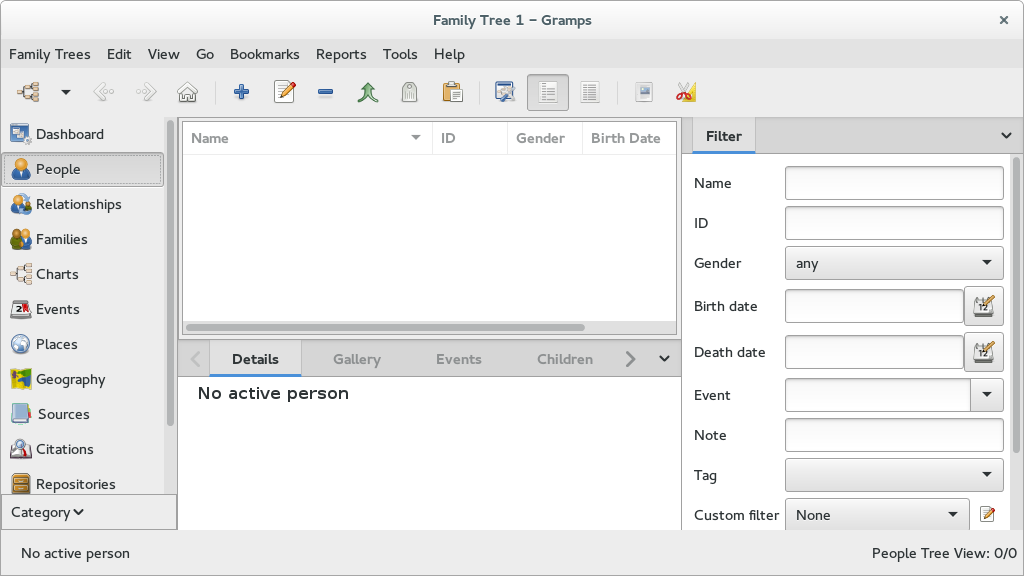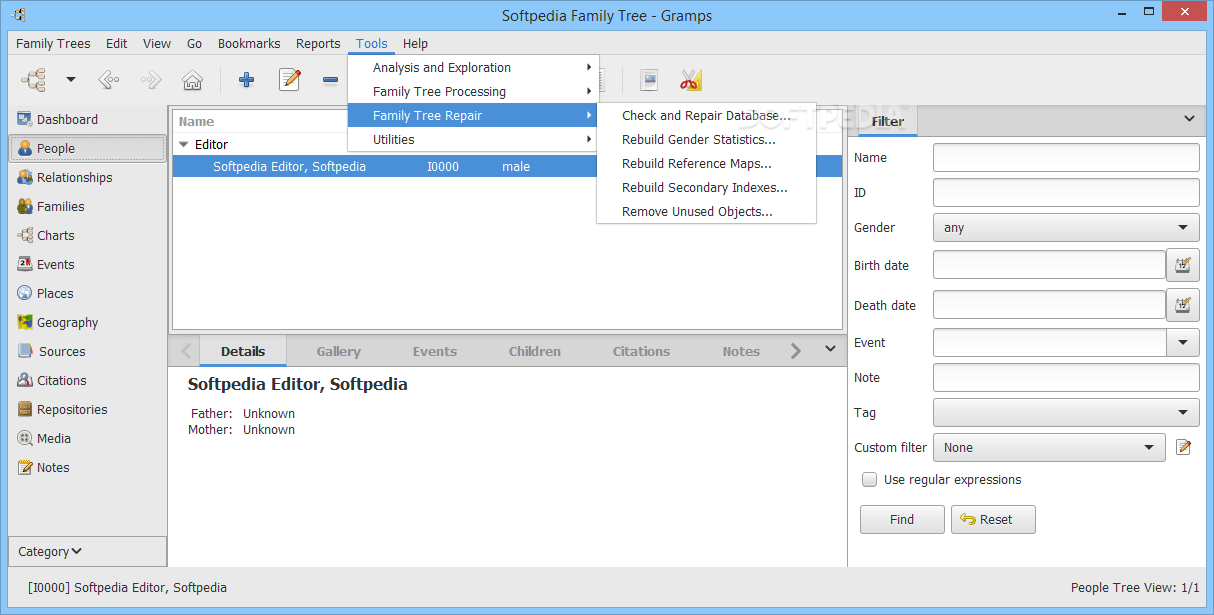

witness or clergy) and notes as necessary. Keep in mind that same event can be referenced from another person’s record, with a different role (e.g. while the Reference information is about this person’s part in the event - his role (primary) as well as corresponding notes and attributes. The Event Reference editor comprises two parts: the Shared information is about the event itself - event type, date, place, privacy, etc. Click the + icon in the Events tab to add an event reference. Double-click on that person in the People view. Imagine that you just discovered information on the burial of a person. However, the objects are not isolated pieces instead, objects are heavily linked to one another. Each sort of object has its own view that can be used to add, modify, and delete objects from the database.

Data is organized into collections of conventional objects: People, Families, Events, Sources, Places, Media, and Repositories. Once GRAMPS has your data, you can start to explore it capabilities. You can mark any piece of information as private in GRAMPS by clicking on a padlock icon in a corresponding editor window. GRAMPS provides a variety of privacy options, from removing the names of living people to excluding their notes and sources, to completely skipping any data marked as private during the export. This way, your GEDCOM file will be left unmodified, and you will benefit from the efficiency of the default database format.Īt any time, you can export your database (or its portion) into GEDCOM to exchange with other people. The best way to import it into GRAMPS is to create a new empty GRDB database and import your GEDCOM file into it, rather than opening the GEDCOM file directly. If you have already computerized your genealogy research, chances are that you have your data in the GEDCOM format, or can generate a GEDCOM file. You probably would not like your personal data to be exposed, so please be mindful about the information on your relatives as well. It is not uncommon for such data to store Social Security numbers and contact information. Be careful about sharing your genealogical data and posting it on the Internet. If you copy your GRDB file to another machine or send it to your grandma, it will not open, but the XML always will.Īnother safety aspect has to do with privacy. In contrast, the software’s default GRDB format is optimized for the speed, at a cost of large files and non-portability. The XML file contains all the data from the database in small files that can be read by anything. You can make periodic backups of your data in GRAMPS XML format by selecting Export from the File menu. Unless your database has just a handful of people, losing data due to a mishap means a lot of work lost. Instead of competing with the manual, I will focus on important tips and highlight newer features.
#Gramps for windows manual
You can invoke a User Manual from the Help menu to guide you through the details of data entry, reports, and tools.

Once installed, GRAMPS is intuitive enough for you to just run it and learn as you go.
#Gramps for windows download
The installation process is explained in detail in the project’s Download section, so I won’t repeat it here. GRAMPS can also generate a wealth of text reports, as well as graphical charts and diagrams based on your data, and it provides many useful tools that examine your information for consistency, check for errors, and explore your database to give you new leads in continuing your family history research. To briefly summarize its abilities, GRAMPS can import a GEDCOM file (the de-facto standard for exchanging genealogical data), provide a convenient and easy way to add and modify the information, and export the data in a variety of formats, including GEDCOM. In this article, I’ll reveal some lesser-known features and tips from the developers’ hideout. Its numerous reviews cover the basics of what it does.
#Gramps for windows free
GRAMPS is the Genealogical Research and Analysis Management Programming System - free extensible personal genealogical software.


 0 kommentar(er)
0 kommentar(er)
